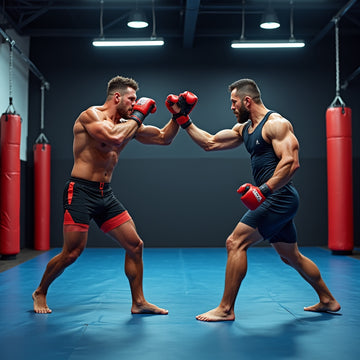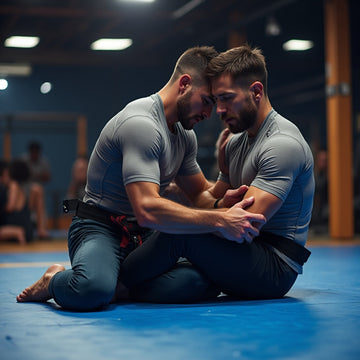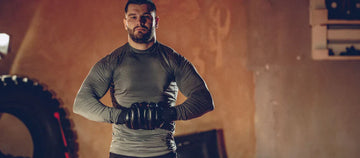In just a few lines: discover how compression gear and rash guards stack up in combat sports. Learn key differences, performance perks, and pick the right gear for MMA, BJJ, or grappling—2025 edition.
Understanding Compression Gear
Compression gear for combat sports has surged in popularity—and for good reason. At its core, this gear is engineered to hug your body with precise pressure zones that boost circulation, reduce muscle vibration, and give a subtle sense of support. Think of it as that extra nudge from a coach, but woven into stretchy fabric. Check out our deep dive on the benefits of compression gear for more detail.
Most compression shirts and spats blend nylon, polyester, and elastane. You get moisture-wicking properties, quick-dry finishes, and UPF protection in high-end models. Want more recovery perks? The graduated squeeze on your calves or quads can aid blood flow, speeding up lactic acid clearance post-session.
Honestly, it sometimes feels like wearing a second skin—minimal bulk, maximum mobility, and a tight fit that doesn’t get in the way of your guard or takedown work. For many fighters, that snug sensation becomes habit: you won’t step foot in the gym without it. But is it a must-have? That depends on your goals, your sport, and how much you value marginal gains.
Exploring Rash Guards
Rash guards originated in surfing, where sun and board rash were constant annoyances. Over time, grapplers and MMA athletes adopted these slick tops for their abrasion resistance, UV blocking, and breathable stretch. Today, they come in long- or short-sleeve cuts, designed for ground work, striking drills, and everything in between. If you’re curious about the best rash guards for MMA, we’ve got a roundup you’ll want to see.
Materials are similar to compression gear—polyester blends and spandex dominate—but the cut is more relaxed around the torso. That extra room can be a blessing if you prefer to layer protective cups or chest pads underneath. Rash guards offer expressive graphics and practical features like silicone sleeve strips to keep everything in place.
At the end of the day, rash guard vs compression gear is a debate of fit and function. If you want airflow and striking coverage, rash guards excel. If you crave targeted pressure and recovery perks, compression shirts often win. Let’s see both sides.
Quick Tip: If you’re torn between tight and loose, try a short-sleeve rash guard under a sleeveless compression top. You get the best of both worlds—protection where it matters and pressure where you need it most.
Benefits of Compression Gear
Compression gear for combat sports offers more than just a sleek look. From training sessions to post-fight cooldowns, these garments pull double duty:
- Enhanced Circulation – Graduated pressure helps venous return, cutting down on perceived fatigue.
- Muscle Support – Stabilizes muscle groups, reducing micro-vibrations and the risk of overuse strains.
- Thermoregulation – Moisture wicking keeps sweat off your skin; some fabrics even adjust to ambient temperature.
- Faster Recovery – Many athletes swear by wearing compression spats after sparring to speed up the recovery process.
- Lightweight Feel – No bulky layers; it’s just you, your movements, and that second-skin sensation.
But, and this is worth noting, compression gear isn’t perfect. It can be restrictive if you choose the wrong size, and skin cooling is minimal compared to mesh panels or ventilated rash guards.
Did You Know? Many fighters wear compression sleeves on individual joints—calves, arms, or quads—for targeted support. It’s like spot treatment for muscles that need extra TLC.
Benefits of Rash Guards
Rash guards excel at providing broad, comfortable coverage without that constrictive squeeze. Let’s break down their perks:
1. Abrasion Resistance: The dense knit fabric stands up to mat burn, friction from uniforms, and light scraping. No more pesky welts on your forearms during rolling.
2. UV Protection: Long-sleeve editions block out harmful rays. If you train outdoors or have open‐air ring sessions, this is a boon.
3. Moisture Management: Quick-dry fabrics pull sweat away from your body, minimizing that clammy feeling in high‐intensity drills. Learn how to care for it in our guide on how to wash rash guards.
4. Freedom of Movement: A looser torso cut gives room for tactical layering: base layers, protective padding, or even a rash guard over a compression shirt for added support—yes, some fighters do that!
Rash guard benefits combat sports extend beyond comfort. They act as a barrier against ring rash and minor impacts when striking. In mixed training sessions—think bag work followed by live rolls—the combo of stretch and protection is invaluable.
Quick Fact: Some rash guards include silicone strips on sleeves to prevent riding up during takedowns. It’s one of those small features you might not notice—until you really need it.
Head-to-Head Comparison
Ready for a side-by-side? Here’s how compression gear and rash guards match up across critical features:
| Feature | Compression Gear | Rash Guards |
|---|---|---|
| Fit & Feel | Snug, second-skin; targeted zones | Looser torso; tighter sleeves |
| Support & Recovery | Excellent (graduated squeeze) | Minimal support, focus on abrasion |
| Protection | Light (no impact padding) | High (mat rash, UV blocking) |
| Breathability | Moderate to high | High (mesh panels, ventilated) |
| Ideal Use | Recovery, strength training, sparring | Grappling, outdoor drills, bag work |
Choosing Based on Sport and Activity
Your chosen discipline plays a huge role in this debate. Here’s how to select gear based on what you do:
MMA & Striking: Bag work, pad drills, and clinch work benefit from a mix: a short-sleeve compression top under a light rash guard provides support and surface protection.
BJJ & Grappling: Mat friction is relentless. Lean toward long-sleeve rash guards for abrasion resistance. Plus, they help wick sweat mid-roll and keep you cooler in heated classes.
Wrestling & Submission Grappling: Some reach for tight spats to protect legs from mat burn; others rely purely on a rash guard for the upper body. If you need extra support, combine spats with a compression shirt.
Cross-Training & HIIT: Compression gear wins for recovery between intervals. You can use the same shirt for running, plyos, and weight circuits without adding chafing.
Trainer’s Tip: If you’re a multi-discipline athlete, pack both. Use compression gear on heavy lift days and opt for rash guards during intensive mat sessions. Your kit becomes more versatile.
Cost and Value Analysis
Price-wise, entry-level compression shirts start around $30–$40, while quality rash guards hover in the $45–$60 range. Premium models—moisture-activated cooling fabrics, seamless construction—can climb near $80–$100.
Which offers better bang for your buck? That depends on usage frequency and durability. Many athletes invest in two compression tops for alternating wash cycles; rash guards, on the other hand, often show wear around seams if you don’t rinse them immediately after class.
Consider the following:
- Frequency of use (daily sparring vs. weekend rolling)
- Climate (indoor, air-conditioned gyms vs. outdoor training)
- Specific needs (recovery emphasis vs. abrasion protection)
Overall, if you train multiple times a week and need both support and coverage, budgeting for one high-quality rash guard and one quality compression shirt is a smart move. Layering this way extends gear lifespan and maximizes performance.
Care and Maintenance
Longevity hinges on how you treat your gear. Here’s a concise care routine to keep both compression wear and rash guards in prime condition:
- Rinse immediately after use in cold water—this prevents odor build-up and fabric breakdown.
- Use mild detergent; avoid bleach, fabric softeners, or harsh chemicals.
- Air dry flat, away from direct sunlight or heat sources; high heat degrades elastane fibers.
- Store folded—hanging can stretch out tight fabrics over time.
- Rotate gear: give each piece a full 48 hours to decompress before reusing. For more care tips, see our detailed maintenance guide.
Maintenance Myth Bust: Dryer sheets? Not recommended. They leave a coating that hampers moisture wicking and can break down your gear’s technical finish.
Recap: Both compression gear and rash guards bring unique advantages. Compression tops deliver targeted support, improved circulation, and recovery perks, while rash guards shine in abrasion resistance, UV blocking, and versatile layering. Your ideal setup depends on your sport, training frequency, and personal comfort. Try combining a snug base layer with a protective rash guard—sometimes the hybrid approach outperforms both alone.
Whether you’re grappling on the mats or drilling strikes in the cage, choosing the right apparel elevates your performance and protects your body. Suit up wisely, train hard, and let every layer work for you.
Updated: 10/09/2025









